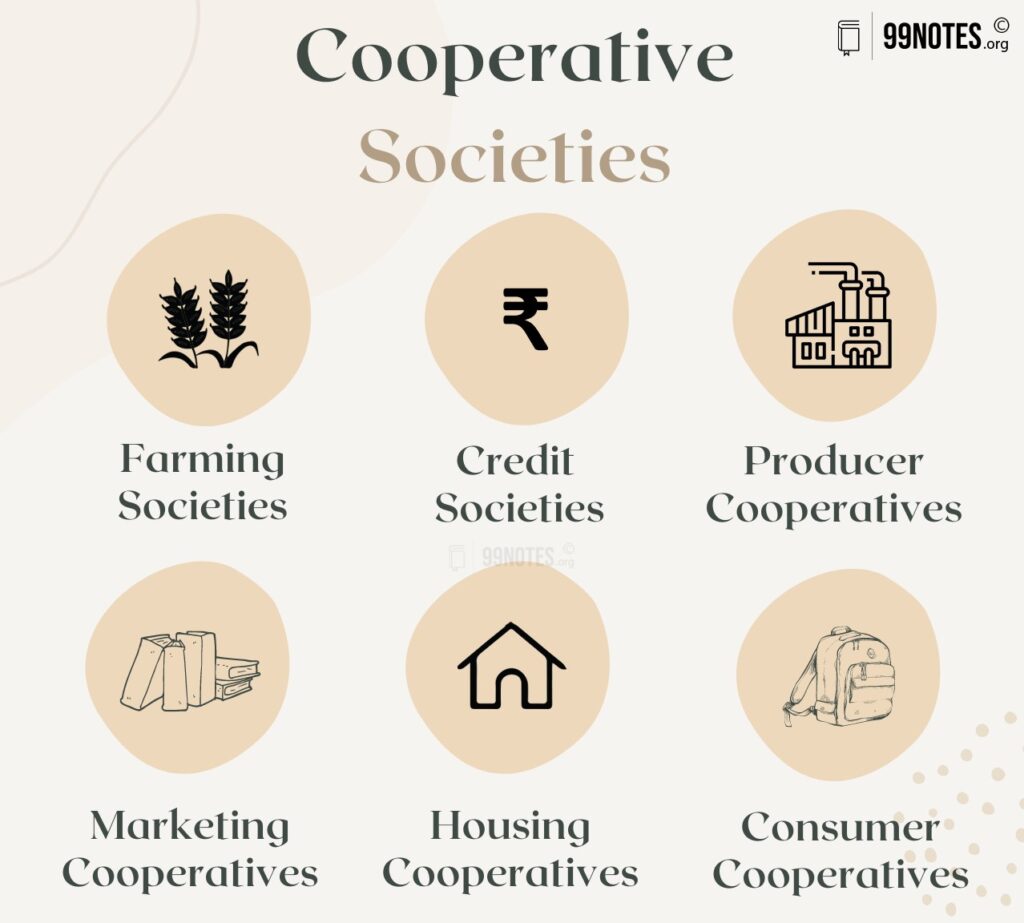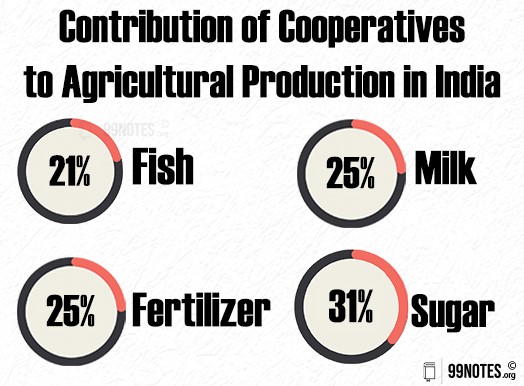KURUKSHETRA SUMMARY JANUARY 2023
Cooperatives: Prosperity through Cooperation
Introduction
- Cooperatives are autonomous associations of people who come together voluntarily to address their common economic, social and cultural needs and aspirations through a jointly owned and democratically run enterprise.
- These are formed to secure low-cost credit, purchase supplies and equipment for farming and household needs, market products, and even secure services like electric power, irrigation, health and insurance.
- Indian cooperative sector is the largest in the world; out of 30 lakh cooperative societies in the world, 29 per cent are in India. Three CS of India, IFFCO, Amul and KRIBCO, are among the 300 largest cooperative societies in the world.
- In 2016-17, India had 8.54 lakh cooperative societies with 29 crore members.
Broadly, cooperative societies in India can be divided into six categories:
- Cooperative farming societies/ Farmer Service Societies.
- Cooperative Credit Societies/ Primary Agriculture Cooperative Societies.
- Producers’ Cooperative Societies.
- Marketing Cooperative Societies.
- Housing Cooperative Societies.
- Consumers’ Cooperative Societies.

Constitutional, Legal, Administrative and Policy Framework
- Cooperatives are governed by the Cooperatives Society Act 1912, Mutually Aided Cooperative Thrift Society Act, and Multi-state Cooperative Societies Act 2002.
- Cooperatives Societies with members from one state are registered under the States Cooperative Societies Act and are regulated by the state registrars of the Cooperative societies concerned. Cooperative societies having members from more than one state are regulated by the Central Registrar of Cooperative Societies under the Multi-State Cooperative Societies.
- Out of 8.54 lakh cooperative societies, 1509 are Multi-state Cooperative Societies registered under the provisions of the Multi-state Cooperative Societies Act, 2002.
- Constitutional Provisions: The 97th Constitutional Amendment Act 2011 granted constitutional protection the cooperative societies. It aimed at encouraging the economic activities of cooperatives in rural India.
-
- It included the right to form cooperative societies as a fundamental right under Article 19.2.
- It included a new Directive Principle of State Policy (Article 43B) for the promotion of cooperative societies.
- It also inserted Part IXB in the Constitution, which laid down the terms by which cooperative societies would be governed. However, some of its portions which pertained to the State list were struck down by the Supreme Court since state ratification was not done.
- The existing National Policy on Cooperatives was formulated in 2002 with the objectives of facilitating all round development of cooperatives and providing necessary support, encouragement and assistance to them. A new National Cooperation Policy is being framed to fulfil the mandate given to the new Ministry of Cooperation.
- National Cooperative Development Council: NCDC was established in 1963 to speed up the cooperative Movements. The government of India provides assistance to cooperatives through cooperatives.
- Ministry of Cooperation: It is responsible for providing a separate legal, administrative and policy framework for strengthening the cooperative movement in the country.
Significance and Contribution of the Cooperative Societies
- Cooperative Societies have contributed significantly to the nation’s economy.
- Cooperatives are responsible for 25 % of the total agricultural finances.
- Cooperatives contribute towards:
- 25 % of fertiliser production.
- 31 % Sugar production.
- 25 % share in Milk production, procurement and Marketing.
- 21 % of Fish production.

- They generate a significant source of employment and support the formalisation of informal employment through collective voice, economies of scale and extension of social protection.
- Cooperatives like Amul, Lijjat, and other milk cooperatives in the southern states have brought economic prosperity to the millions of people from marginalised sections.
- The Cooperative sector has contributed significantly to strengthening the rural economy through its engagement in agriculture, fishery, agro-processing, dairy, honey, Silk etc., by providing credit, agricultural inputs and marketing.
- Cooperatives play a major role in rural areas where private and public investments are lacking. It inculcates the habit of saving and enables the communities to pool together their resources to solve their common socio-economic problems.
Challenges and Issues
- Uneven and skewed spread: There is a skewed spread of cooperative societies across the states. Seven states, Maharashtra, Gujarat, Andhra Pradesh, Telangana, Karnataka, west Bengal and Kerala, have more than the national average. In comparison, states like Bihar, Jharkhand, Madhya Pradesh, Uttar Pradesh etc., record much below the national average.
- Economically unviable: A large number of cooperatives are not economically viable; they are spread over limited villages with meagre membership.
- Lack of Transparency: The top posts of society are usually occupied by rich farmers who manipulate the organisation for their own benefit. These societies are plagued by misappropriation of funds, irregular elections, political interference etc.
- Functional Weakness: The Co-operative Movement has suffered from the inadequacy of trained personnel due to a lack of appropriate institutions for the training of personnel and a flawed governance structure discouraging the inflow of qualified and experienced personnel. There is also a lack of computerisation which makes it inefficient and opaque.
- Low participation of Marginalised section: The Participation of scheduled castes, scheduled tribes, women and other vulnerable sections of society is low. Only 2.52 per cent of all the cooperatives solely belong to women.
- Lack of awareness: There is a lack of awareness among the people, particularly the vulnerable sections, about the benefits of these societies.
- Restricted size and functions: Most of these societies are confined to a few members, and their operations are extended to only one or two villages. The majority of the societies are single-purpose societies which limit their functionality.
- Increasing Centralisation: Over the years central government has been acquiring more and more control over cooperative societies. Cooperative banks have been brought under the purview of the Reserve Bank of India.
Negatives:
- Since cooperatives come under state governments’ regulation, they should have more control.
- The state’s approach towards cooperatives is suited to localised needs; central control might impact their governance.
Positives:
- Cooperatives are plagued by misgovernance and misappropriation of funds; hence, governance reforms are needed.
- Centre has more resources to incentivise the cash-strapped cooperatives.
- Increased centralisation and streamlining may lead to upward mobility, and cooperatives can grow into corporate units.
Government Initiatives
- Separate ministry for Cooperation: To realise the vision of “Prosperity through cooperation”, a new ministry of Cooperation was createdin July 2021. Its aims to deepen cooperatives as a people-based movement and streamline processes for ‘Ease of doing business’ for cooperatives and facilitate the development of Multi-State Co-operative Societies.
- Multi-state Cooperative Societies (Amendment) Bill, 2022: This bill has been brought to ensure the transparency and accountability of cooperatives. This also has a provision for the amalgamation and split of the MSCSs as well as the merger of a state cooperative with MSCSs.
- Reduction of Taxes: The budget of FY23 announced the reduction of the Minimum alternate Tax for cooperatives from 18.5 per cent to 15 per cent, and the surcharge was also brought down.
- Digitalisation: The Government has launched a pan-India project of computerisation of 63000 PACs (Primary Agriculture Cooperative Societies) to ensure the efficiency of their operations. They have also been registered as ‘buyers’ on the Government e-marketplace (GeM) to ensure transparency in the procurement system.
- New Cooperation policy: A new cooperation policy is on the anvil, which will replace the two-decade-old policy.
- National Cooperative Database: It will help identify the areas where cooperative movement could be expanded and accordingly facilitate the framing of appropriate policy.
Way forward
- Awareness: widespread awareness program about the cooperative movement should be undertaken through the pan-India network of capacity-building institutions.
- Capacity building: There is a need for sector-specific customisedspecialised programs for the capacity building of those working in the cooperative sector.
- Digitalisation: There is a need to give impetus to the digitalisation of cooperative societies to increase transparency and efficiency in their function.
- Regulation: Governance reforms and better regulation are necessary to infuse transparency and accountability in the system.
- Coordination between centre and state: There is a need for effective dialogue and coordination mechanisms between the centre and state.
- Promoting entrepreneurship: Entrepreneurship can be promoted among societies to carry out effective community business.
- Cooperatives need to develop a competitive spirit and adopt technology and innovation to compete with the private corporate sector.



